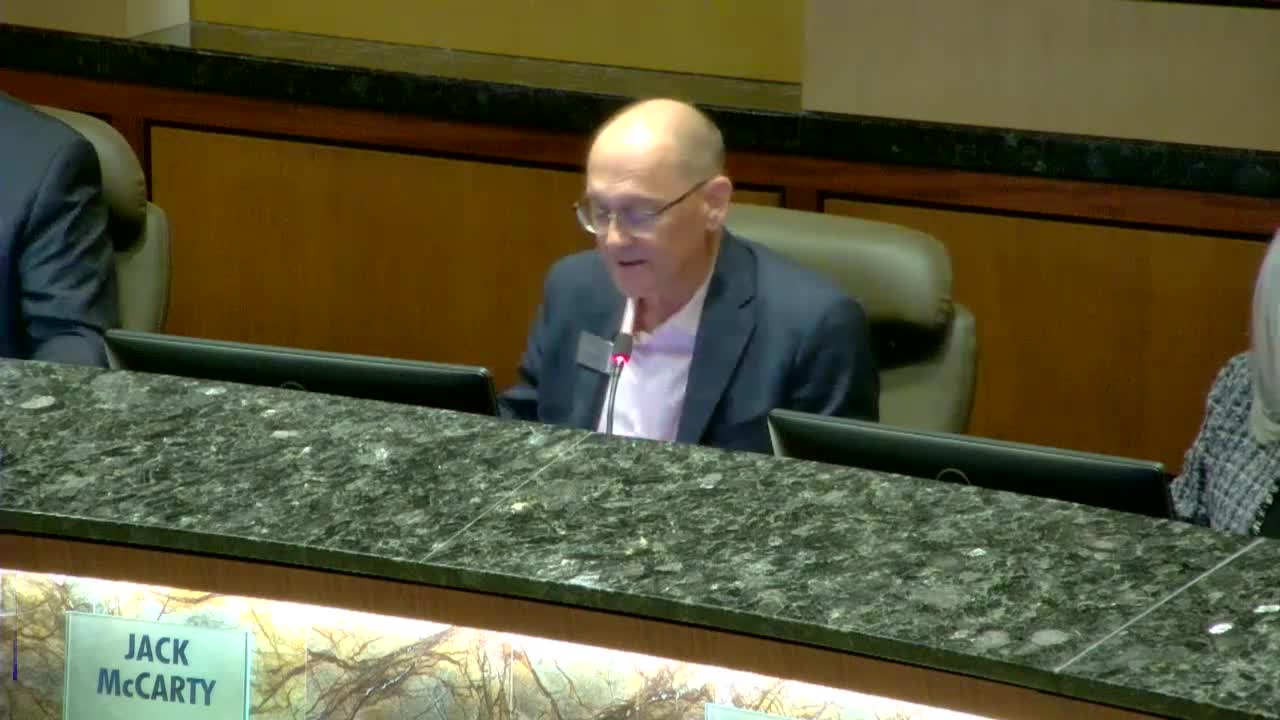Citizens demand change to restrictive carport regulations
October 14, 2024 | North Richland Hills City, Tarrant County, Texas
This article was created by AI summarizing key points discussed. AI makes mistakes, so for full details and context, please refer to the video of the full meeting. Please report any errors so we can fix them. Report an error »

During a recent City Council meeting, residents of North Richland Hills voiced their concerns regarding the city's restrictive carport ordinances. The public comment segment allowed citizens to address the council on matters not scheduled for consideration, leading to a passionate discussion about the need for more flexible regulations surrounding carports.
Marcos Drago, a long-time resident, initiated the dialogue by highlighting the practicality of carports in protecting vehicles from harsh weather conditions. He noted that many existing carports in the city are grandfathered in, suggesting that the current restrictions do not reflect the community's needs. Drago urged council members to reconsider the ordinance, emphasizing that it should be more user-friendly and aligned with the preferences of residents who appreciate the lack of a homeowners association in their community.
Augustus Ruby echoed Drago's sentiments, sharing his personal experience of how a carport significantly improved his quality of life. He criticized the current size limitations, arguing that they do not accommodate modern vehicles and families with multiple cars. Ruby called for a reevaluation of the ordinance to better serve the needs of residents.
Heather Ruby, also addressing the council, reinforced the need for expanded carport dimensions to accommodate larger vehicles and families. She pointed out that the existing restrictions hinder residents from making necessary improvements to their homes, particularly in older neighborhoods where space is available.
The final speaker, Pat Cook, did not provide specific comments but added to the growing concern among residents regarding the carport regulations.
The council did not take immediate action on the carport issue during the meeting, as discussions were limited to public comments. However, the residents' collective appeal may prompt future deliberations on revising the ordinance to better reflect the community's desires and practical needs.
Marcos Drago, a long-time resident, initiated the dialogue by highlighting the practicality of carports in protecting vehicles from harsh weather conditions. He noted that many existing carports in the city are grandfathered in, suggesting that the current restrictions do not reflect the community's needs. Drago urged council members to reconsider the ordinance, emphasizing that it should be more user-friendly and aligned with the preferences of residents who appreciate the lack of a homeowners association in their community.
Augustus Ruby echoed Drago's sentiments, sharing his personal experience of how a carport significantly improved his quality of life. He criticized the current size limitations, arguing that they do not accommodate modern vehicles and families with multiple cars. Ruby called for a reevaluation of the ordinance to better serve the needs of residents.
Heather Ruby, also addressing the council, reinforced the need for expanded carport dimensions to accommodate larger vehicles and families. She pointed out that the existing restrictions hinder residents from making necessary improvements to their homes, particularly in older neighborhoods where space is available.
The final speaker, Pat Cook, did not provide specific comments but added to the growing concern among residents regarding the carport regulations.
The council did not take immediate action on the carport issue during the meeting, as discussions were limited to public comments. However, the residents' collective appeal may prompt future deliberations on revising the ordinance to better reflect the community's desires and practical needs.
View full meeting
This article is based on a recent meeting—watch the full video and explore the complete transcript for deeper insights into the discussion.
View full meeting
